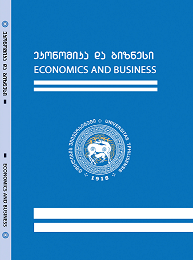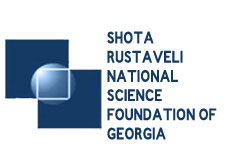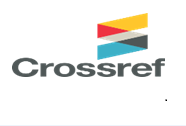
Referential and Reviewed International Scientific-Analytical Journal of Ivane Javakhishvili Tbilisi State University, Faculty of Economics and Business

Determination of the Optimal Level of the Span of a Management and its Influence on the Formation of the Organizational Structure
doi.org/10.52340/eab.2024.16.03.04
It has been about a century and a half since mankind used the scientific method to improve the management of organizations. From the second half of the 20th century, management itself became one of the directions of science. During this time, many governance problems have been solved through the scientific approach, and many still need to be solved. One of them is the issue of the optimal span of a management, which has been debated by scientists and practitioners for more than a century. Each organization during its creation, has a problem of determining the span of a management. In this case, it does not matter what form of ownership has organization or what type of the organizational-legal basis is used. With the development and consolidation of organizations, this question only gets worse.
Quite a large share of those studies that are conducted in the direction of management all over the world, concern the definition of the optimal span of a management. There are also many scientific works that are devoted to the identification of the optimal team size. According to the authors, all these works can be considered in one context and they are all devoted to the definition of normative quantitative values. After all, the primary tasks of managers at all levels are to create an effective team from a group of people subordinated to him.
The correct formulation of scientific terms is an important problem in all fields. One of the goals of the presented article is the interpretation of the important management term in the Georgian language. In author’s opinion, to accurately describe the phenomenon that indicates the optimal number of personnel that should be directly under one manager, it is most appropriate to use the term - "span of a management". The authors introduce a new term "management norm". If "span of a management" is the number of personnel subordinated to one manager in each specific situation, "management norm" is a standard indicator, a scientifically proven "span of a management".
The problem of the span of a management is key to the effective work of managers at all levels and directions. This is especially relevant when teams are being created for different structural units of the organization. The employees of each of them must act as a cohesive team to achieve organizational goals. The effectiveness of these teams and, consequently, the managers who lead them is assessed in three directions: the level of administration costs, labor productivity, and job satisfaction. Administration costs should be low, and labor productivity and job satisfaction, on the contrary, high. All of the above indicators are directly influenced by the span of a management.
Georgia is a part of Western civilization, where the development of business sciences began and the parameters of management norms were developed among them. It should also be taken into account that our country actually went through the same development path as the European one. Accordingly, the authors rely on the analysis of the scientific investigations in the article, which is mainly created by European and American scientists and practitioners.
Based on the above, the authors express the opinion that at the upper hierarchical levels, the span of management should consist of 4 to 6 employees, and at the lowest level, the activity of up to 20 people is allowed in a specific structural unit. In addition, management norms should be specified separately for each industry. Furthermore, it is of a great importance what legal origin this or that organization has or what form of ownership it belongs to. The parameters proposed by the authors create quite a wide range in terms of the number of personnel employed in the organization. That is, based on it, both flat and tall organization structures can be created.
In an organization where two management hierarchical levels are created, up to 7 people can work without violating the above management norms. As for the maximum number of employees for an organization with 5 managerial hierarchical levels, this indicator will be 4579 people, and in the case of 6, 27475. In case of using a divisional structure, this number can increase several times so that the number of managerial hierarchical levels remains unchanged. This means that by following the parameters provided by the authors, an organization structure of any size can be created.
References:
• David D. van Fleet and Arthur G. Bedeian (1977). A History of the Span of Management, The Academy of Management Review, Vol. 2, No. 3 (Jul., 1977), pp. 356-372 (17 pages), Published By: Academy of Management, https://www.jstor.org/stable/257693?origin=crossref
• Apostolos (2024). What is the Ideal Team Size and why it Is Important?
https://www.leadingbeat.com/what-is-the-ideal-team-size-and-why-it-is-important/
• Harald Weinbrecht (2019). Organizational Management and the “Rule of 7”,
https://www.linkedin.com/pulse/organizational-management-rule-7-harald-weinbrecht
• FRED NICKOLS (2011). “THE SPAN OF CONTROL AND THE FORMULAS OF V.A. GRAICUNAS”
https://www.nickols.us/graicunas.pdf
• Massimo Bianchi (2011). Graiciunas’ Principle in the Control Process of Public Networks: The Case of Italian Local Governments https://www.academia.edu
• Janko M. Cvijanović (2005). Jelena Lazić, The Use of the Span of Control in the Design of Organizational Structure, This Paper Forms Part of the Results of Research on Project 1324, “Improving the Organizational Structure as the Key Contingent Factor of the Enterprise“, financed by the Serbian Ministry of Science and Environmental Protection.
• Tim Brewer (2024). What’s a Tall Organization and Is It Out of Fashion?
https://www.functionly.com/orginometry/org-structures/whats-a-tall-organization-and-is-it-out-of-fashion?fbclid=IwY2xjawE4VSNleHRuA2FlbQIxMAABHXtX-_xiexlAlFN2SdwVfyX1bNFrZNx8gXiN01rFfRaUkqxPtYipWkAwng_aem_bMNhOzCafwnkhYcD3hFvkQ
Keywords: Span of Management, Management Norm, Managerial Hierarchical Levels, Organizational Structure.
JEL Codes: M10, M11, M12









